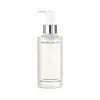La Roche-Posay Lipikar AP+ Lipid-Replenishing Cleansing Oil Versus AMOREPACIFIC Treatment Cleansing Oil
What's inside
What's inside
 Key Ingredients
Key Ingredients

 Benefits
Benefits

 Concerns
Concerns

 Ingredients Side-by-side
Ingredients Side-by-side

Cetyl Ethylhexanoate
EmollientDicaprylyl Carbonate
EmollientPolyglyceryl-10 Dioleate
EmulsifyingPentaerythrityl Tetraethylhexanoate
EmollientPEG-8 Glyceryl Isostearate
EmollientParfum
MaskingCamellia Sinensis Seed Oil
HumectantLimonene
PerfumingButylphenyl Methylpropional
PerfumingCitronellol
PerfumingWater
Skin ConditioningTocopherol
AntioxidantLinalool
PerfumingCocos Nucifera Oil
MaskingBetula Platyphylla Japonica Juice
Skin ConditioningButylene Glycol
HumectantVaccinium Myrtillus Fruit Extract
Skin ConditioningGlycine Soja Oil
EmollientZingiber Officinale Root Extract
MaskingSaccharum Officinarum Extract
MoisturisingCitrus Aurantium Dulcis Fruit Extract
MaskingCitrus Limon Fruit Extract
MaskingAcer Saccharum Extract
Skin ConditioningCamellia Sinensis Leaf Extract
AntimicrobialPhenoxyethanol
PreservativeCaprylyl Glycol
Emollient1,2-Hexanediol
Skin ConditioningDisodium EDTA
Ethylhexylglycerin
Skin ConditioningCetyl Ethylhexanoate, Dicaprylyl Carbonate, Polyglyceryl-10 Dioleate, Pentaerythrityl Tetraethylhexanoate, PEG-8 Glyceryl Isostearate, Parfum, Camellia Sinensis Seed Oil, Limonene, Butylphenyl Methylpropional, Citronellol, Water, Tocopherol, Linalool, Cocos Nucifera Oil, Betula Platyphylla Japonica Juice, Butylene Glycol, Vaccinium Myrtillus Fruit Extract, Glycine Soja Oil, Zingiber Officinale Root Extract, Saccharum Officinarum Extract, Citrus Aurantium Dulcis Fruit Extract, Citrus Limon Fruit Extract, Acer Saccharum Extract, Camellia Sinensis Leaf Extract, Phenoxyethanol, Caprylyl Glycol, 1,2-Hexanediol, Disodium EDTA, Ethylhexylglycerin
 Reviews
Reviews

Ingredients Explained
These ingredients are found in both products.
Ingredients higher up in an ingredient list are typically present in a larger amount.
Parfum is a catch-all term for an ingredient or more that is used to give a scent to products.
Also called "fragrance", this ingredient can be a blend of hundreds of chemicals or plant oils. This means every product with "fragrance" or "parfum" in the ingredients list is a different mixture.
For instance, Habanolide is a proprietary trade name for a specific aroma chemical. When used as a fragrance ingredient in cosmetics, most aroma chemicals fall under the broad labeling category of “FRAGRANCE” or “PARFUM” according to EU and US regulations.
The term 'parfum' or 'fragrance' is not regulated in many countries. In many cases, it is up to the brand to define this term.
For instance, many brands choose to label themselves as "fragrance-free" because they are not using synthetic fragrances. However, their products may still contain ingredients such as essential oils that are considered a fragrance by INCI standards.
One example is Calendula flower extract. Calendula is an essential oil that still imparts a scent or 'fragrance'.
Depending on the blend, the ingredients in the mixture can cause allergies and sensitivities on the skin. Some ingredients that are known EU allergens include linalool and citronellol.
Parfum can also be used to mask or cover an unpleasant scent.
The bottom line is: not all fragrances/parfum/ingredients are created equally. If you are worried about fragrances, we recommend taking a closer look at an ingredient. And of course, we always recommend speaking with a professional.
Learn more about ParfumWater. It's the most common cosmetic ingredient of all. You'll usually see it at the top of ingredient lists, meaning that it makes up the largest part of the product.
So why is it so popular? Water most often acts as a solvent - this means that it helps dissolve other ingredients into the formulation.
You'll also recognize water as that liquid we all need to stay alive. If you see this, drink a glass of water. Stay hydrated!
Learn more about Water